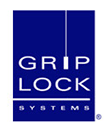Industry News
Demand For Lighting Equipment Increases During Fourth Quarter Of 2009
February 26, 2010
NEMA’s Lighting Systems Index climbed 4.1 percent on a quarter-to-quarter basis during the fourth quarter of 2009. With the exception of emergency lighting, all of the market segments tracked in the LSI contributed to the improvement. This quarterly advance marked the LSI’s second consecutive increase following its 31 percent peak-to-trough decline. Those recent gains may signal a turning point, but overall lighting equipment demand remained weak. The 2009Q4 index value was down 10.3 compared to the same period in the previous year. On a year-over-year basis, the large lamps category saw shipments increase for the first time since the beginning of 2007.
In terms of the broader U.S. economy, despite seeing a fairly strong 5.7 percent annualized rate of growth during 2009Q4, the economic recovery cannot be classified as robust just yet. Most of the pop in Q4 growth can be traced back to an end in the inventory liquidation cycle and a pick up in export demand, but stronger-than-expected gains in business investment during the quarter point to some measurable improvements in the economy’s underlying fundamentals. In addition, confidence surveys and various regional manufacturing sector surveys indicate businesses are becoming increasingly confident about the economic recovery’s prospects.
With all that said, several factors remain in play that point to a relatively weak recovery going forward, some of which will have a direct influence on lighting equipment demand. First, the residential lighting demand has been weak for several years now due to the housing market’s well-documented struggles. The housing market has improved in the past year, but as of late the underlying demand fundamentals have been hard to pin down due to bad winter weather and an expired (and since renewed/expanded) homebuyer tax credit. Low levels of construction activity and healthy existing home sales have allowed the inventory situation to get better, but the spectre of a surge of strategic defaults could cause conditions to deteriorate appreciably and further delay what is already a muted housing market recovery.
While the outlook for residential lighting equipment demand is less certain, demand for lighting systems with commercial or industrial applications is poised to weaken for the foreseeable future as conditions in most commercial real estate markets will remain poor through 2011. Indeed, the combination of rising vacancy rates and ongoing deterioration in banks’ construction and development loan portfolios points to limited demand for new space and practically nonexistent funding availability for new construction activity. Commercial lighting equipment demand might benefit from retrofitting activity, but businesses will likely keep spending on hold for new lighting systems until growth in final demand is healthier and more sustainable. Outdoor equipment and other lighting systems associated with public sector infrastructure projects should be a bit of bright spot, but even this will be a short-term boost as the bulk of remaining stimulus funds are spent over the course of 2010.









































